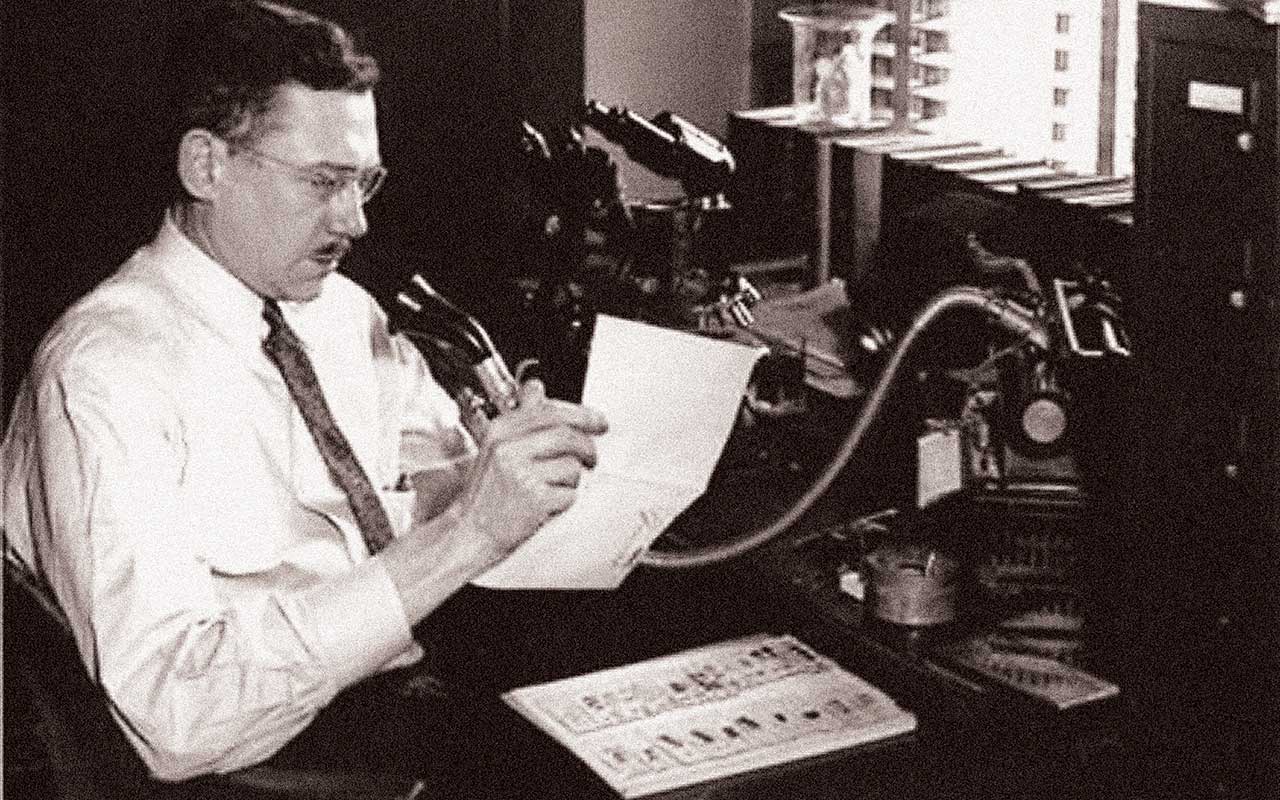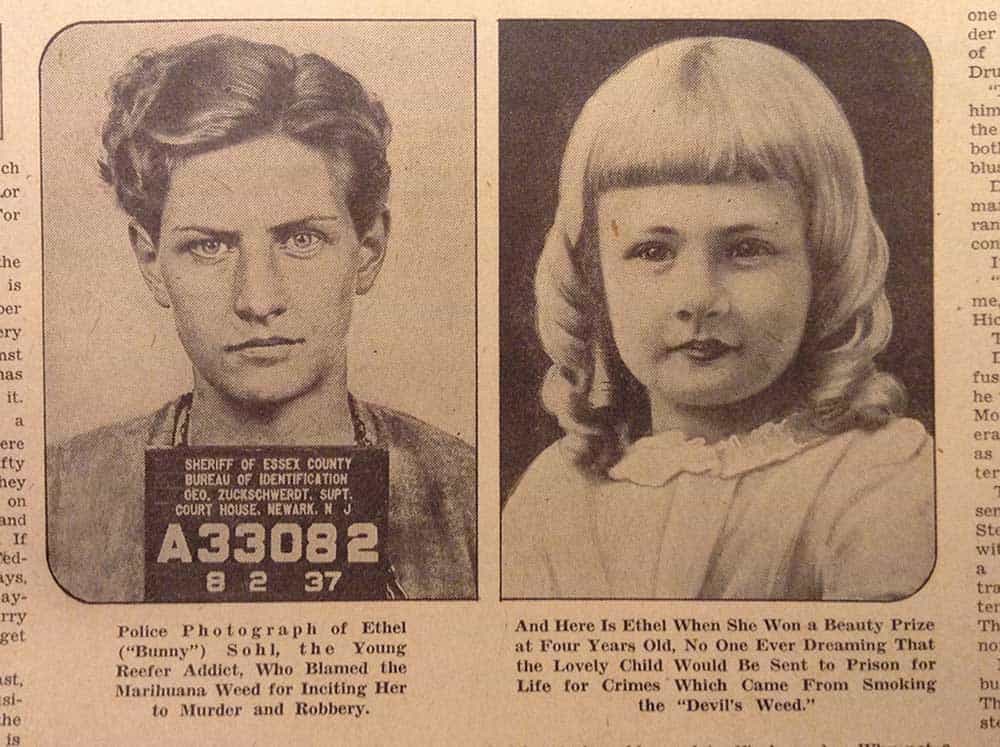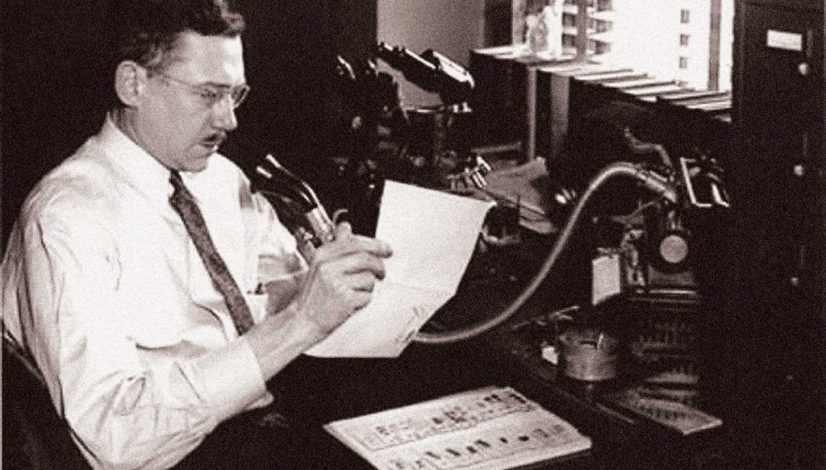The Crimes of Reefer Madness
The post The Crimes of Reefer Madness appeared first on High Times.
Convincing the country that cannabis posed such a danger to society that only prohibition could save it was never going to be easy. Remember that, in the years before the peak reefer-madness era of the 1930s, marijuana was generally considered a benign, medically efficacious substance that was widely available in American pharmacies. However, the nation’s nascent drug warriors in the newly formed Federal Bureau of Narcotics, led by an enterprising propagandist named Harry Anslinger, were able to co-opt a number of sensational crimes and disingenuously tie them to cannabis. With the help of marijuana “experts” like Dr. James C. Munch, the FBN succeeded in creating an anti-cannabis campaign that left an indelible mark on the American psyche, ultimately resulting in pot’s prohibition. In reality, the crimes used in furtherance of Anslinger’s crusade often had little or nothing whatsoever to do with cannabis. These are the true crimes of reefer madness.
“After two puffs on a marijuana cigarette, I was turned into a bat.”
Such was the testimony of Dr. James C. Munch, a marijuana “expert” who was called as a witness in two murder trials in 1938. Munch was a Temple University pharmacologist who’d ingratiated himself with Harry J. Anslinger and became his unconscionable henchman at the Federal Bureau of Narcotics—the predecessor of the Drug Enforcement Administration.
Munch had experimented with the reefer on himself, and he explained its allegedly psychosis-inducing effects at the trials of Ethel “Bunny” Sohl and Arthur Friedman. Both were on trial for murder, and both attempted to blame the devil’s weed for their deeds.
“After the first cigarette, I felt as if I had wings,” Munch said of his experience. “I seemed to have great blue wings and I was flying around the world.”
Munch went on to enjoy a successful career fighting the War on Drugs as an expert pharmacologist working for several government agencies. He held various positions at hospitals in Philadelphia and served as the director of pharmacology research at Temple for more than two decades—an impressive résumé that gave him an air of credibility regarding what he painted as a little-understood and frightening narcotic. Munch’s status as a well-respected doctor and scholar aided him in convincing many that marijuana could drive otherwise law-abiding citizens to commit murder. His work greatly assisted Anslinger in demonizing and ultimately prohibiting cannabis in the 1930s.
“Literature surveys and personal contacts have clearly demonstrated the association between the use of marihuana and the commission of various crimes,” wrote Munch in a 1966 paper for the Bulletin on Narcotics, a publication of the United Nations Office on Drugs and Crime.
To illustrate his point, Munch included nearly 70 “authenticated case reports” of crimes committed by those who’d smoked cannabis. (Anslinger, who helmed the FBN for more than 30 years, made a habit of collecting salacious stories to illustrate the evils of pot.) “This objective evidence supports published statements of the association between the use of marihuana and various types of crime,” Munch asserted.

Marijuana “expert” James C. Munch recorded “cannabis crimes.”
The “Objective” Evidence
The types of crimes that Munch attributed to cannabis use included murder, rape and robbery. Even bigamy fell under his umbrella of pot-induced mayhem: Munch wrote of an unidentified defendant in 1938 that “fter smoking 2 marihuana cigarettes, married waitress, although already married and with 3-year-old child. Everything went blank, and he had no control.”
But perhaps the most notorious of Munch’s tales was one from Tampa, Florida, in 1933. Munch claimed that a man named Victor Licata “urdered his father, mother, sister and two brothers with an ax, while under influence of marihuana. Didn’t know of all this until next morning.”
The story of Victor Licata was widely used to promote the theory of a link between cannabis and violent crime. As previously reported in High Times (April ’13), the 20-year-old Florida man became instrumental in Anslinger’s budding War on Drugs. Licata’s act of murdering his family with an ax was certainly horrific, and thus the perfect case for Anslinger to capitalize on. He insisted that Licata had been smoking pot and was greatly aided by a press eager to play up the killer’s marijuana “addiction.”
There was, of course, no evidence that Licata was driven insane by marijuana. However, the troubled young man was diagnosed with “dementia praecox,” an early psychiatric term for schizophrenia. His family’s well-documented history of mental illness was eventually made known to the public, but not until after Anslinger had gotten what he wanted out of the story that he and Munch created.
A Terrible Crime
“Smoked 2 marihuana cigarettes, then raped his 7-year old daughter… Outcome: Death in gas,” Munch wrote about the case of Oscar Ralph Ashworth in 1938. Despite including the Ashworth crime in his “authenticated” case file, Munch seems to have gotten most of the basic facts wrong.
Ashworth pleaded guilty to kidnapping a 7-year-old girl in Missouri and was sentenced to be executed in the gas chamber. However, Munch’s accusation of marijuana consumption appears to be completely unfounded: There is no evidence that Ashworth ever smoked pot. Also, the girl wasn’t his daughter, and even though Ashworth confessed to committing some kind of assault on her, he was never charged with rape, as Munch asserts—nor did he die in the gas chamber.
Much of the coverage of this case concerned the efforts by Ashworth’s attorneys to intervene in his execution and save his life. But that didn’t stop less scrupulous reports from being published and subsequently used as anti-pot propaganda. According to Courtney Ryley Cooper’s 1939 book Designs in Scarlet: “A newspaper made the statement that was a marihuana fiend and that he had committed his crime while under the influence of the drug. Federal sources reported that as far as could be learned, the whole story originated in the mind of a cub reporter who asked the sex-murderer after he had been sentenced: ‘Why didn’t you tell the court that you smoked marihuana cigarettes?’”
However, Ashworth was no “sex-murderer”: He had previously served time for stealing a hog and for raping a young girl, and he received a death sentence for kidnapping another young girl a year or two after his release from prison on the rape charge. But Cooper himself was no stranger to reefer-madness rantings, having helped Anslinger write the propaganda book Marijuana, Assassin of Youth in 1937. However, if his account is correct, the Feds continued for years to use Ashworth’s case as an example of marijuana-fueled depravity, despite knowing that cannabis wasn’t a factor in it at all.
Even decades later, Ashworth’s story was invoked by those who wanted to prop up prohibition. The case was reportedly dredged up by the now-defunct International Narcotic Enforcement Officers’ Association to illustrate the dangers of cannabis during a 1965 conference—27 years after the alleged “marihuana fiend” was supposedly spurred by the drug to commit his crime. The following year, Munch also cited Ashworth’s case as representative of the “various crimes committed by individuals after use and while under the influence of marihuana (usually smoked).”
“Killer Confesses in Trunk Murder!”
So blasted the headlines in August of 1937, the same month that President Franklin D. Roosevelt signed the Marihuana Tax Act into law, effectively prohibiting the cannabis trade.
The murder of Oliver George Sinecal by a man named Joseph Ogden came to be known as the “trunk murder.” Ogden had shot Sinecal and stuffed his body into a trunk with the intention of shipping it to Memphis, Tennessee. After lugging it to the Railway Express Agency, Ogden told the clerk that the unusually heavy piece of luggage contained silverware and hurried away. The clerk, moving the trunk on the platform, saw that it left a trail of blood. He promptly notified the authorities.
The story of Joseph Ogden also came to be included in Munch’s case file of violent crimes allegedly linked to cannabis. “While both smoking marihuana cigarettes, shot and killed room-mate G. Sinecal, who wanted to borrow 20 to buy heroin,” Munch wrote. “Put body in trunk, to get rid of it. Arrested that night, had 20 marihuana cigarettes; had been selling in Miami restaurant before crime. Previous criminal record.” According to Munch, Ogden even stated: “I was fearless after smoking marihuana cigarettes but would not have done this without marihuana.”
But as in the case of Oscar Ralph Ashworth, the details about marijuana cigarettes appear to be entirely fabricated.
The story of Ogden’s crime was featured in the Foreign Policy Bulletin, a publication of the nonprofit Foreign Policy Association. The organization, well regarded by wonks of the era, even drew praise from the president: “The is performing a high duty in facilitating the lucid presentation of the facts of world problems and their impact upon the United States,” Roosevelt once wrote.
Among these “facts” was a list of 10 cases “culled at random from the files of the U.S. Bureau of Narcotics” and used to illustrate marijuana’s direct role in violent crime. The list included Ogden and his supposed confession to the trunk murder after smoking marijuana. However, a well-respected psychiatrist at New York’s Bellevue Hospital found no evidence to support the claim.
Ogden “was examined in this clinic,” wrote Walter Bromberg in the Journal of the American Medical Association two years after the crime. “There was no indication in the examination or history of the use of any drug.” According to Bromberg, “The investigation by the probation department failed to indicate use of the drug marihuana.”
Bromberg went on to look for evidence of the link between marijuana use and violent crime that drug warriors like Anslinger insisted on, only to come up empty-handed. His clinic saw some 17,000 criminals over the course of more than six years and found several hundred who had “direct experience with marihuana.” In those individuals, Bromberg noted “the absence of true addiction and the negative connection with major crime… Especially is this noteworthy among sexual offenders and in cases of assault or murder.”
The psychiatrist also delved into court records. In sampling the cases of 1,500 drug offenders, Bromberg found only 135 cannabis consumers. Of those, the majority (about 70 percent) had no previous criminal record. About 20 percent had been charged with other crimes, while others had only drug charges on their records. “Among those with longer records… none showed progression from the use of drugs to other crimes,” he wrote.
Bromberg had hit on an insight that most Americans have slowly come to accept: the relative lack of harm associated with cannabis and the absurdity of its prohibition. “The earlier use of marihuana apparently did not predispose to crime,” he wrote, “even that of using other drugs.”
Bromberg then issued a prescient warning: “The extravagant claims… that crime is caused by addiction to marihuana demands careful scrutiny.”

A newspaper clipping depicts Ethel Sohl before and after the “Devil’s Weed.”
Unintended Consequences
In his own eagerness to make the case for marijuana and madness, Munch testified at the trial of Ethel Sohl that her reefer smoking led her to “form the intent” of holding up and murdering a bus driver. Sohl herself testified that the marijuana cigarettes “made wrong things seem right.”
Ironically, it fell to the prosecutor in the case to argue that marijuana had nothing to do with the crime: “If you men open the door to a fantastic defense of this kind, it will be all right for anyone to commit a murder if only he first smokes marijuana.”
Indeed, cannabis was a looming factor in the case and emphasized by the media: “Mrs. Sohl Constantly Smoked Marijuana, Murder Jury Hears,” read one headline. Sohl’s defense attorney argued that pot use had diminished her capacity to tell right from wrong. “Although counsel said that his defense was not insanity, it amounted substantially to that,” observed the judge.
Instead of being sentenced to death, Ethel Sohl got life in prison. Munch’s reefer-madness testimony was having the unintended effect of resulting in lesser sentences for these alleged marijuana-crazed killers.
Harry Anslinger put a stop to this, threatening Munch with the loss of his position at the FBN. As a result, Munch stopped testifying and went on to have a long career advising the federal government on the dangers of reefer.
The Racism of Reefer Madness
By now, the racist underpinnings of Anslinger’s War on Drugs have been well documented. He warned that Mexicans and African-Americans were more disposed to use the drug, which allegedly made them lust after white women. He waged a cruel campaign against Billie Holiday when he learned that the rising black star was addicted to heroin, which included planting drugs on the singer and imprisoning her. (The damning details of Anslinger’s crusade against Holiday are well told in Johann Hari’s book Chasing the Scream.) But when he found out that the white actress Judy Garland was similarly addicted, Anslinger called her into his office for a friendly chat and advised her to take longer vacations.
In the hospital where Billie Holiday passed away, narcotics agents handcuffed her to the bed, interrogated her and threatened to take her back to prison. She died, in 1959, before they could do so. Ten years later, Garland was found dead from a barbiturate overdose in her home.
As one digs deeper into newspaper archives, the reefer-madness headlines take on an increasingly racist tone. “Mexicans Grow Weed and School Students Smoke It, Police Chief Says,” reads one particularly illustrative headline from 1928. Prejudice against brown people? Check. Concern for children? Check. Overreliance on law-enforcement sources? Check. Nearly 90 years later, these themes remain.
Current media consumers will likely be unsurprised by the era’s coverage of “crazed” Mexicans raping and murdering. Take the case of Escrado Valle: “KILLS SIX IN A HOSPITAL. Mexican, Crazed by Marihuana, Runs Amuck With Butcher Knife,” reads a 1925 item from The New York Times. Valle, allegedly driven mad from smoking marijuana, stabbed two workers in the hospital kitchen before running into the ward and killing four patients. “Police say that after he was taken to the jail and quieted he denied all knowledge of the affray,” the Times story continued.
Cases like Valle’s were perfect for the narrative that Anslinger and his men promoted. And, indeed, this case became one of many used as racist anti-pot propaganda when Anslinger came to power.
Academic texts on the beginnings of prohibition in the United States often attribute such lurid coverage to anti-Mexican racism. But this type of coverage was common in Mexico as well. Before reefer madness became a staple of American news, the Mexican press was filled with sensational stories of marijuana-induced insanity, of “addicts” going on murderous rampages.
Between 1854 and 1920, the large majority of references to marijuana in the Mexican press included stories of violence and madness attributed to the use of pot, according to an analysis by historian Isaac Campos. This was partly due to marijuana being associated and confused with other plants (such as peyote, mushrooms and datura) used by Indian shamans. But another key factor in the way the Mexican press portrayed the drug was classism—a close cousin of institutional racism in the United States.
From the beginnings of recreational cannabis use in Mexico, it was “associated with prisons and soldiers’ barracks. That was definitely a class issue,” Campos said. Thanks to its links with criminal types, cannabis “developed a reputation for producing violence.” It wasn’t a far leap in a country where alcohol-fueled violence was rampant. This was a drug consumed by prisoners, soldiers (who were typically marginalized and conscripted) and Mexican Indians (who were viewed by elites as primitive and uncivilized).
“Mexican ideas spread to the US and helped reinforce ideas in the US that marijuana could cause madness and maybe even violence,” Campos explained. “Mexican elites in 1920 had very similar ideas about vice and intoxication as their peers in the US.” Both were “anti-alcohol, anti-vice and very puritanical in their views.”
As Campos writes in his book Home Grown, “the result was a powerful, international prohibitionist alliance between Mexico and the United States. We are still living with the consequences.”
The post The Crimes of Reefer Madness appeared first on High Times.


